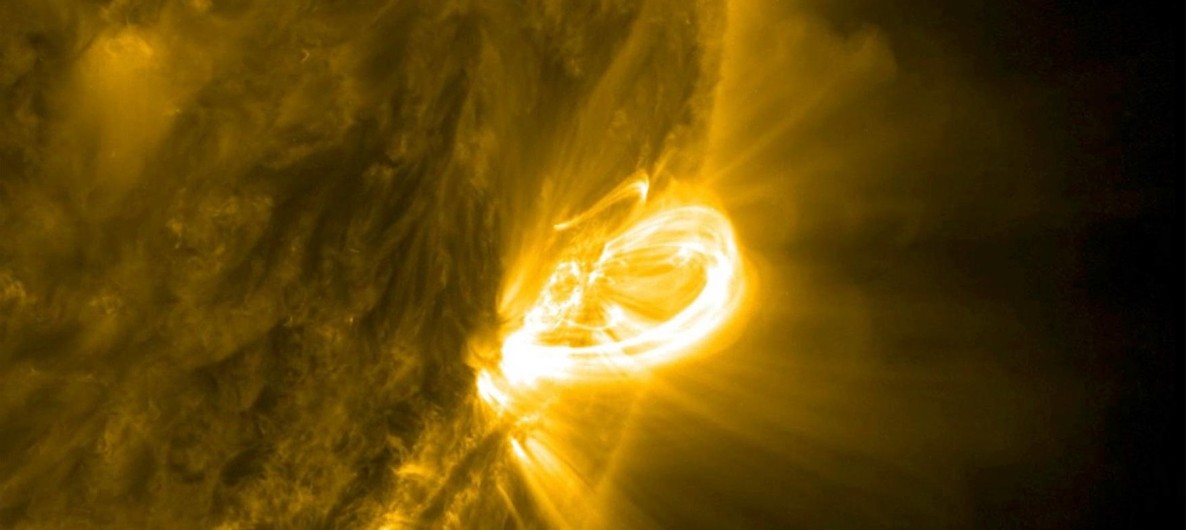Magnetic reconnection studied in the laboratory
 At the Sun's surface, radiation from charged particles illuminates magnetic field lines that form arches. During a solar flare, these field lines are reconfigured through magnetic reconnection. NASA/GSFC/SDO
At the Sun's surface, radiation from charged particles illuminates magnetic field lines that form arches. During a solar flare, these field lines are reconfigured through magnetic reconnection. NASA/GSFC/SDO
During a solar flare, our star ejects gigantic bursts of particles and radiation. At the heart of this phenomenon, magnetic reconnection acts as a particle accelerator: the changing topology of the magnetic field lines that form the foot of the solar arches releases a large amount of energy. The dynamics of this process, which also occurs in other astrophysical events, remain mysterious. In particular, solar observations show that this process is rapid and impulsive, which theoretical models struggle to account for. Scientists hypothesise that geometry is the key factor in determining the speed of magnetic reconnection. The work carried out by a collaboration of researchers, notably from the Intense Lasers Laboratory (LULI*) and the Plasma Physics Laboratory (LPP*) as part of Simon Bolanos' thesis, supports this hypothesis. They are published in the journal Nature Communications.
This question is difficult to answer through direct observation of solar arches dynamics during solar flares. However, with the help of scaling laws, it is possible to reproduce the phenomena observed in space in a relevant way in a small-scale model. This is what laboratory astrophysics is all about.

In the laboratory astrophysics experiment (left), two laser beams focused on targets create two magnetic structures. Numerical simulations reproduce this phenomenon (right). Credit Andrey Sladkov.
The principle of the experiment carried out at the LULI2000 platform consists of firing a high-intensity nanosecond laser beam at two targets to generate a plasma. In this state of matter, the electrons circulate and generate a magnetic field. The two targets thus create two magnetic structures, whose relative inclination is controlled. In order to measure the magnetic field, the researchers use the proton radiography method developed at LULI: flashes of protons pass through the structure and the deflection of their trajectory is measured to determine the magnetic field (more precisely, the evolution of the magnetic field gradient).
In addition, numerical simulations carried out at LPP show that the greater the inclination between the magnetic structures, the slower the magnetic reconnection process. The geometry hypothesis would therefore be a good way to explain the astrophysical observations.
*LULI: a joint research unit CNRS, École Polytechnique - Institut Polytechnique de Paris, CEA, Sorbonne Université
LPP: a joint research unit CNRS, École Polytechnique - Institut Polytechnique de Paris, Observatoire de Paris, Sorbonne Université, Université Paris-Saclay
 Support l'X
Support l'X